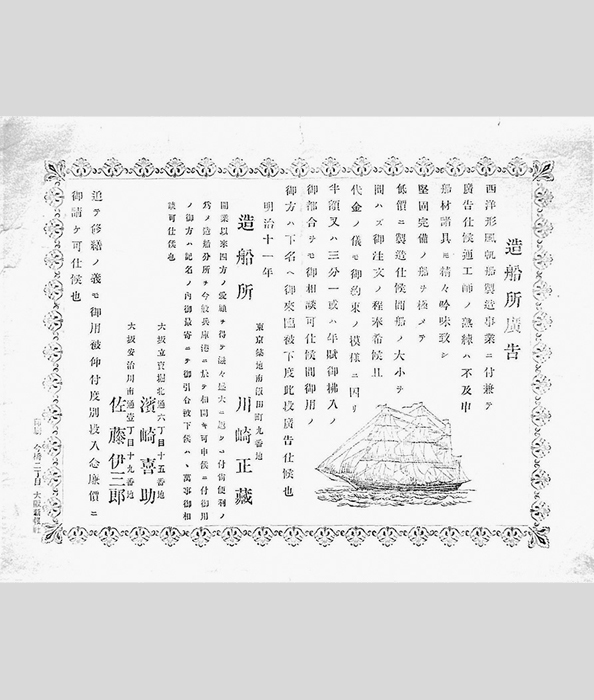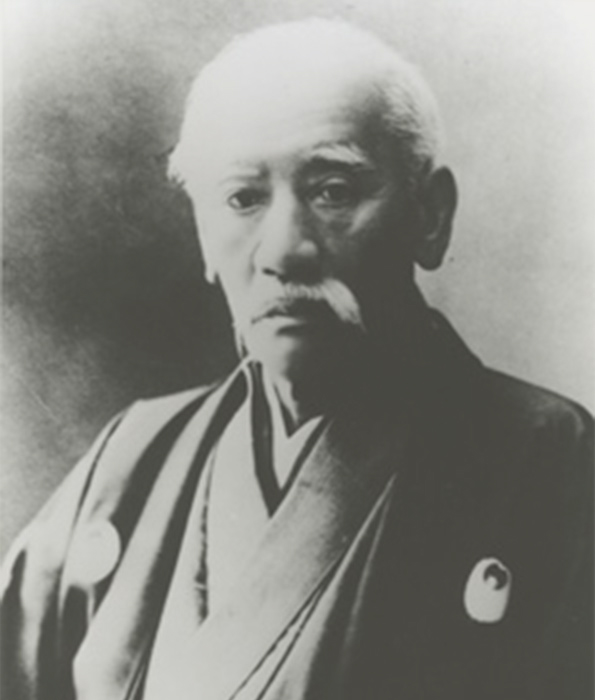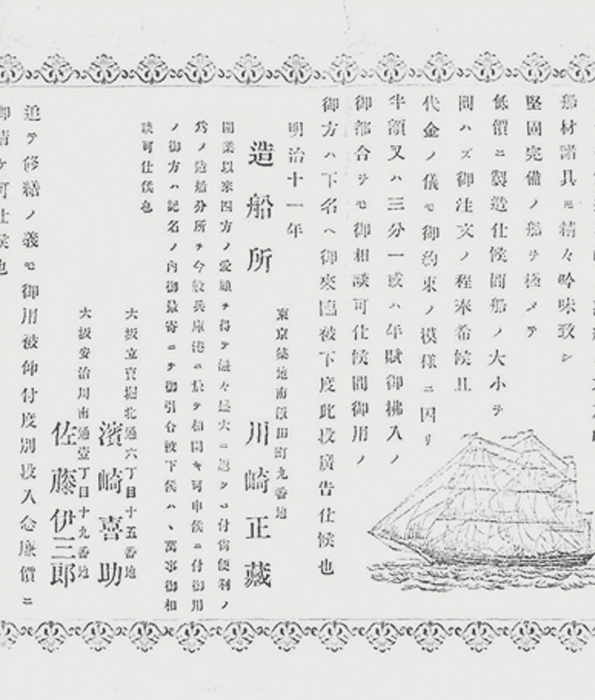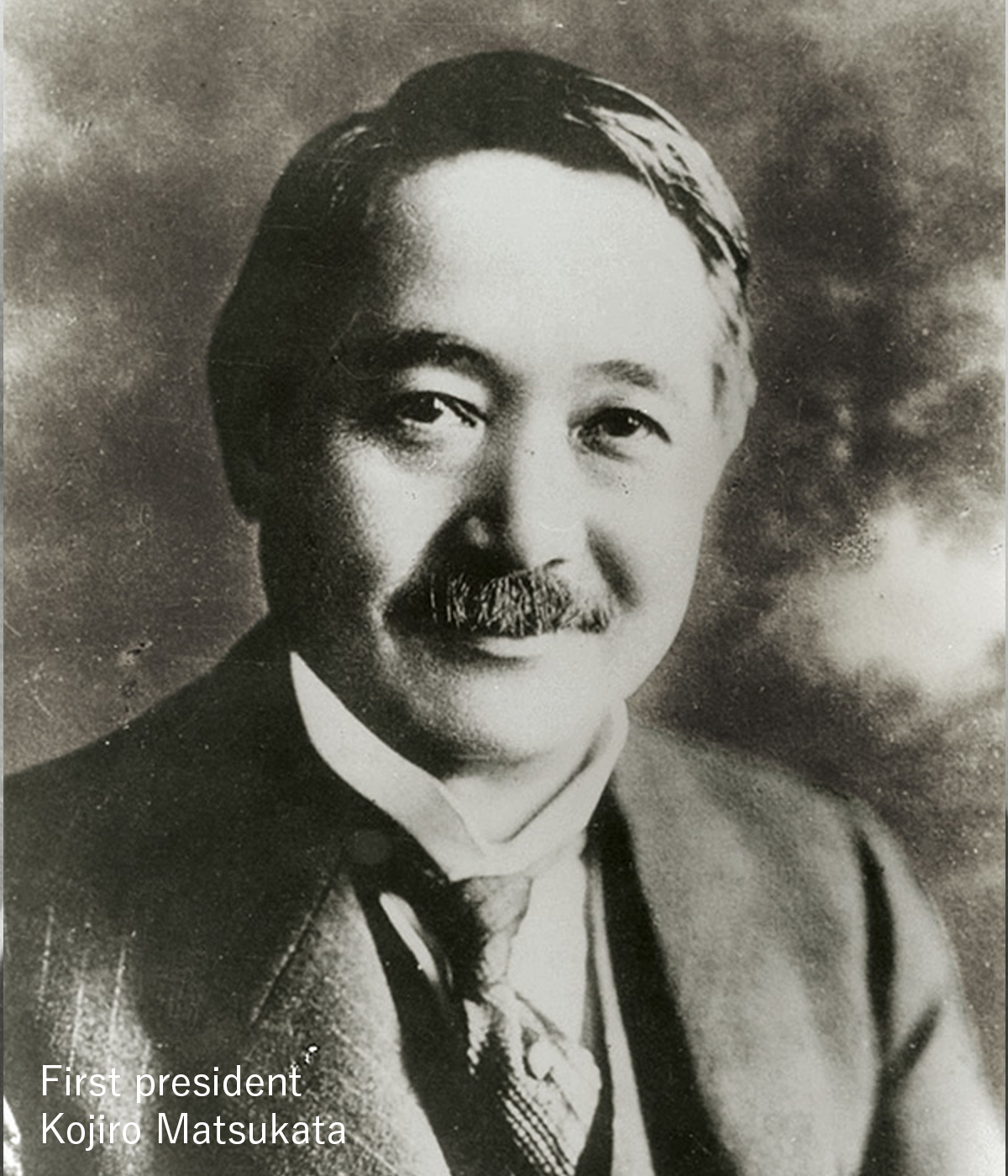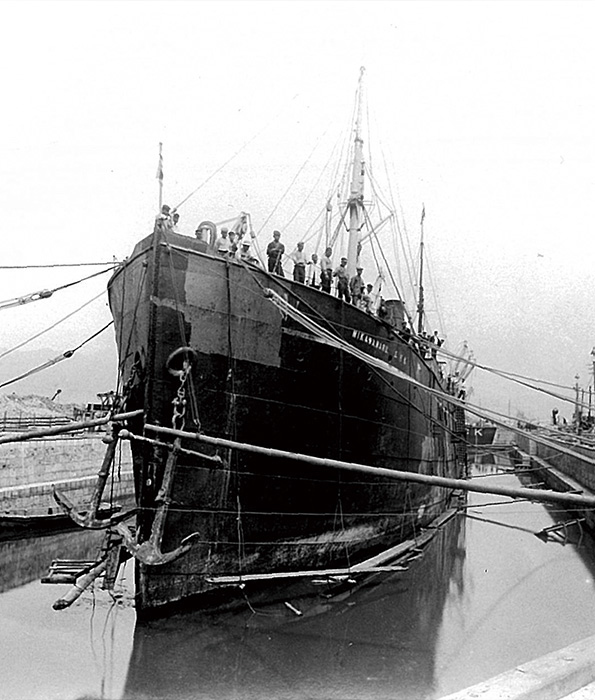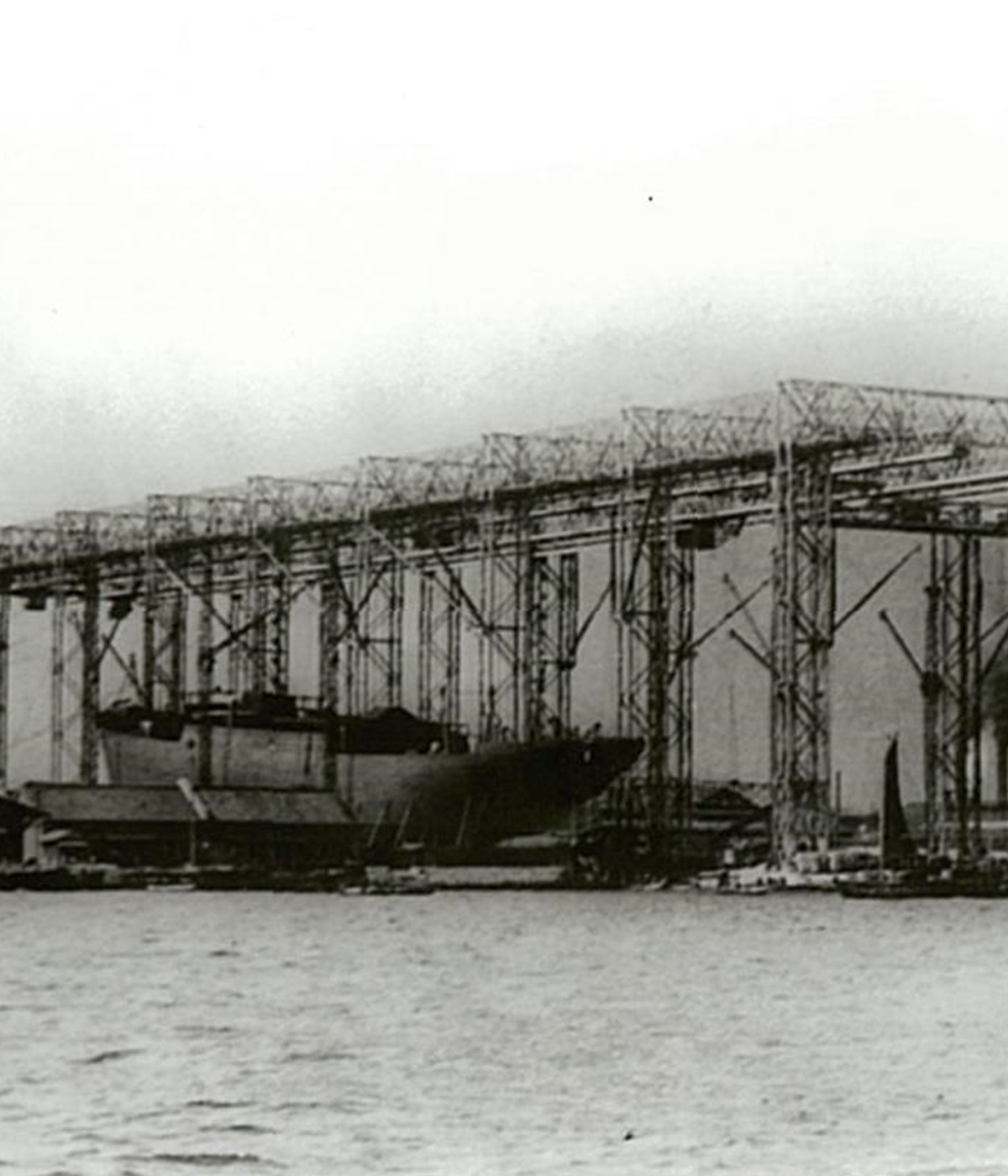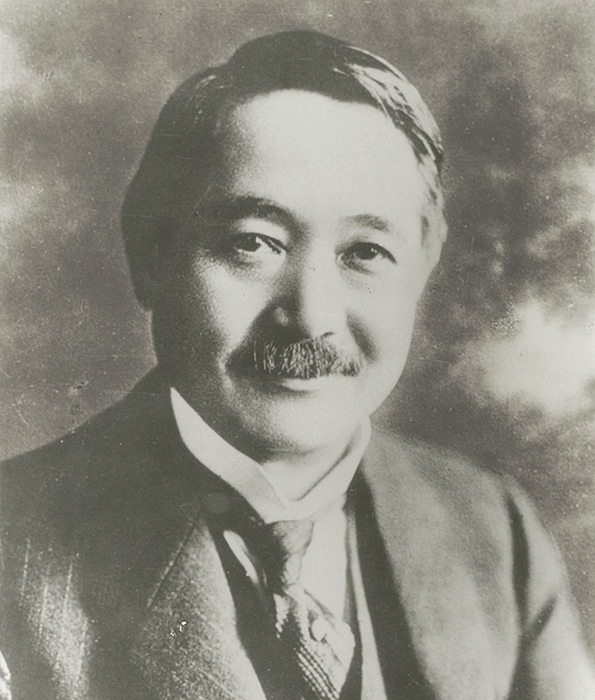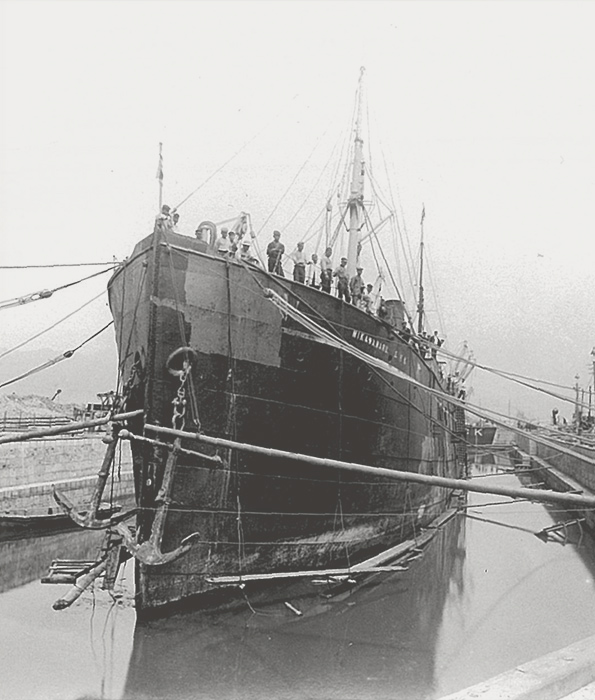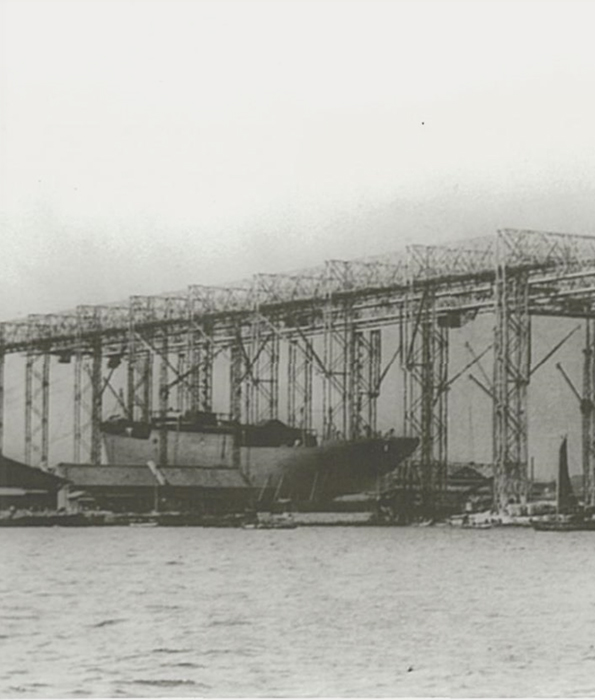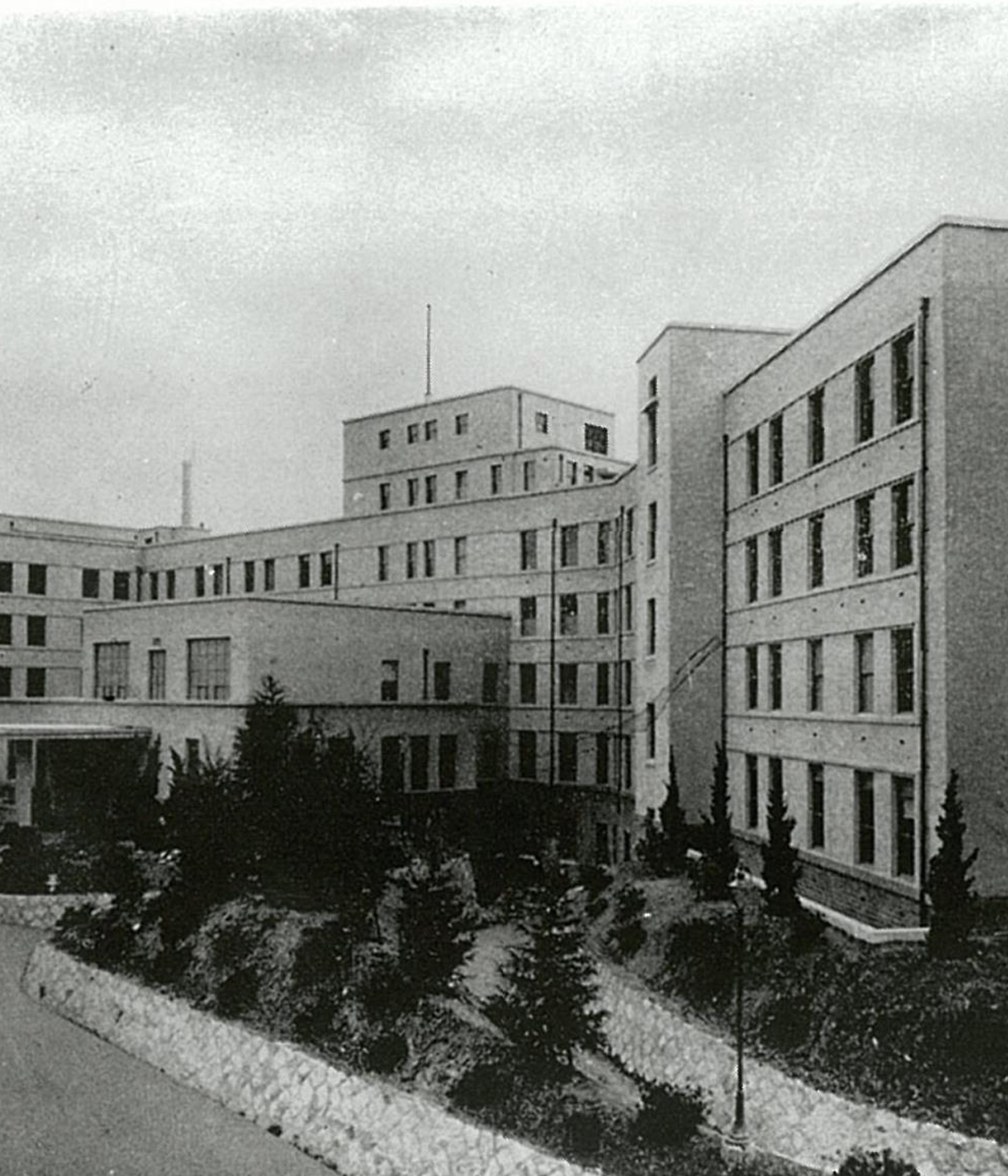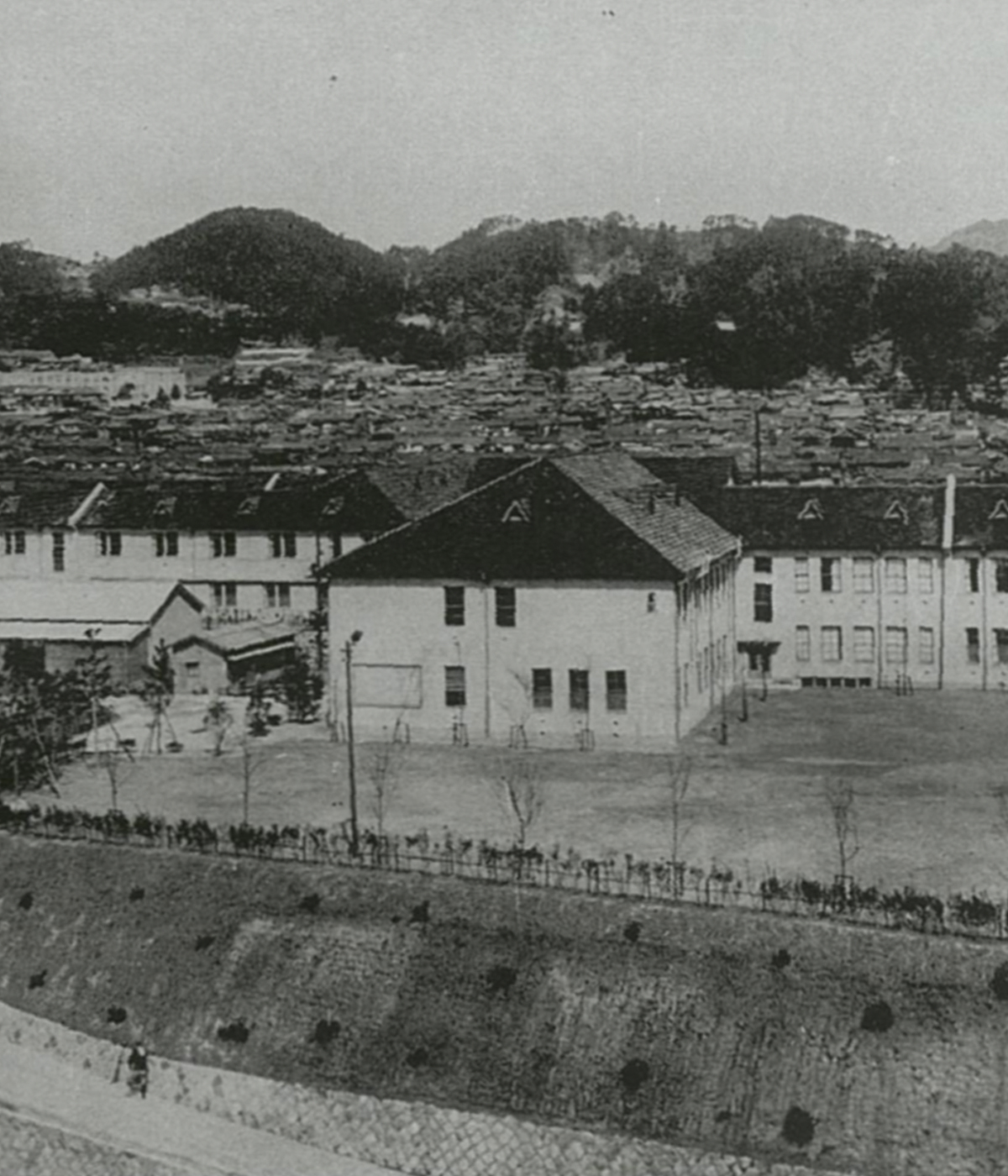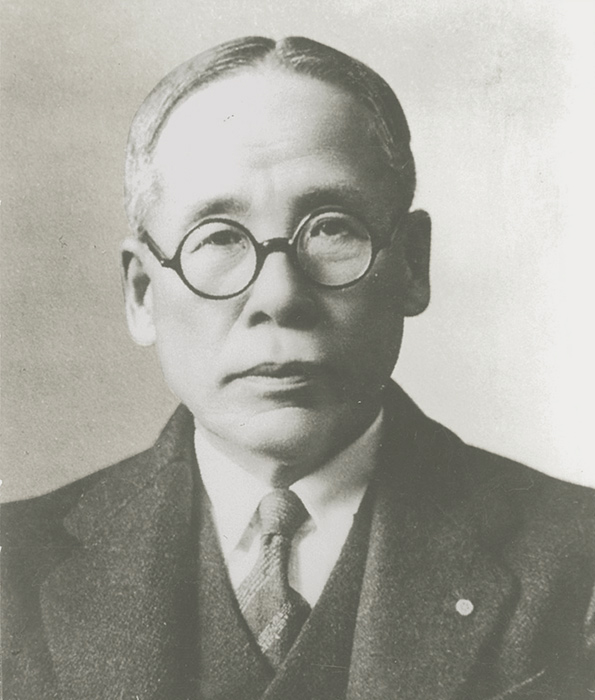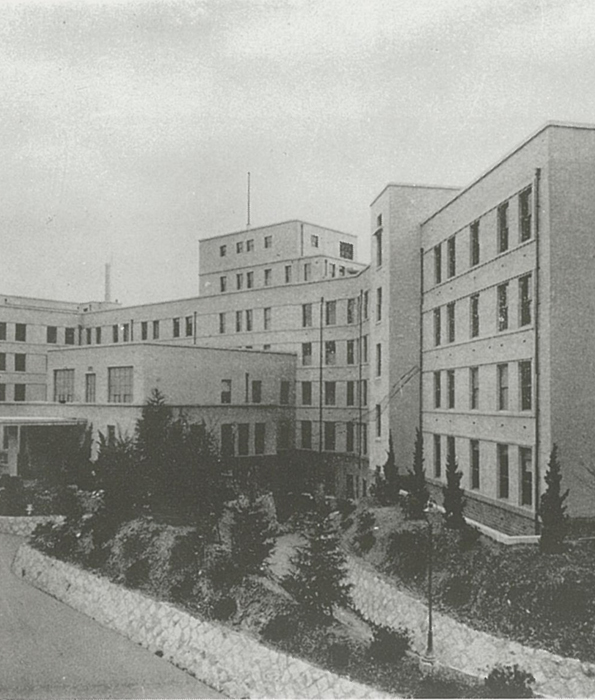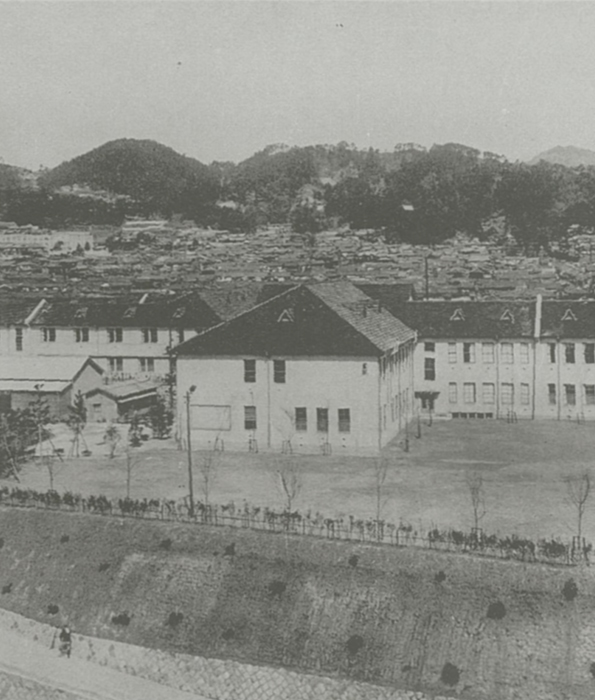Kawasaki's DNA
Here, we will introduce the biographies of some key figures: Shozo Kawasaki, the founder of Kawasaki Dockyard (predecessor of Kawasaki Heavy Industries); Kojiro Matsukata, the first company president who implemented the diversification of management; and Hachisaburo Hirao, the third company president who strived for the welfare of employees and their families, as well as for business stabilization.
Contributing to the nation
—to society—through expertise
Founder Legacy of Shozo Kawasaki
Shozo Kawasaki was born in Kagoshima as the son of a kimono merchant in 1837. At the age of 17 (1853),
he went to Nagasaki—the only window to western civilization at the time—and accumulated training as a
trade merchant. When he was 27 (1863), he moved to Osaka and started a shipping business, but it failed
when his ship was wrecked and sank along with his cargo during a storm.
After that, in 1869, he was employed at a company that handled Ryukyu sugar and had been established by
a Kagoshima samurai. In 1873, he was commissioned by the Ministry of Finance to conduct investigations
on Ryukyu sugar and sea routes to Ryukyu (currently Okinawa). The following year, he was appointed as
vice president of Japan National Mail Steamship Company, and successfully opened a sea route to Ryukyu,
transporting sugar to mainland Japan.
During this time, Shozo Kawasaki encountered several sea accidents that influenced his destiny. Through
these bad experiences, his trust in Western ships deepened, as they had more spacious interiors and were
faster and more stable than the traditional Japanese ships of the Edo period. At the same time, he
developed a strong interest in the modern shipbuilding industry.
In 1878, with the support of Masayoshi Matsukata, an older man from the same hometown and the Vice
Minister of Finance at the time, Kawasaki borrowed land from the government along the Sumida River,
Minami Iida-cho, Tsukiji, (currently 7-chome, Tsukiji, Chuo-ku) in Tokyo. There, he established Kawasaki
Tsukiji Shipyard, taking his first step into the shipbuilding industry.
Three years later, he opened the Kawasaki Hyogo Shipyard in Higashidemachi, Hyogo Prefecture, which
established a system for shipbuilding in both eastern and western Japan. Then, the government sold him
the government-managed Hyogo Shipyard in 1887. After transferring the main functions of the Kawasaki
Tsukiji Shipyard and Kawasaki Hyogo Shipyard, the newly established Kawasaki Dockyard had 618 employees,
three building berths, two slipways, and five boilers (Totaling 111 horsepower).
When the Sino-Japanese War broke out in 1894, orders flooded into shipyards, mainly for ship repair
work, and Japan's shipbuilding industry boomed. Kawasaki planned to reorganize the company into a
joint-stock corporation to allow for major facility expansion.
Shozo Kawasaki founded Kawasaki Dockyard Co., Ltd. on October 15, 1896. The first president was Kojiro
Matsukata, the third son of Prime Minister Masayoshi Matsukata. Shozo Kawasaki, the largest shareholder,
became his adviser.
Afterward, while venturing into land management, he also participated in various business ventures. He
was also a renowned art collector and opened a private art museum, among other things. He passed away in
his home in Nunobiki, Kobe City, on December 2, 1912 when he was 75 years old.
Establishing the foundation of a comprehensive heavy industry company
across land,
sea, and air.
Bringing western culture to Japan.
First president Legacy of Kojiro Matsukata
Kojiro Matsukata was born on January 17, 1865 (Keio 1) as the third son to Masayoshi Matsukata in Satsuma Province (currently Kagoshima Prefecture). He was an international man who studied abroad at universities such as Yale University in the United States, and the University of Paris in France. He was appointed as secretary to the prime minister when his father, Masayoshi, formed the First Matsukata Cabinet in May 1891. After Masayoshi retired in August 1892, Kojiro Matsukata was appointed as the first president of Kawasaki Dockyard Co., Ltd. on October 15, 1896. After getting his position at the company, he spent six years getting the dry dock completed in November 1902 so that large ships could be constructed, and he newly established gantry cranes in November 1912 so that large warships could be constructed. Over the next 32 years, until May 26, 1928, he developed the company into one of Japan’s leading heavy industries companies. He did this by expanding into the rolling stock, aircraft, and shipping businesses, and by implementing various measures, such as Japan’s first eight-hour workday system.
In addition to serving as president and director of numerous companies, such as Kobe Gas, Kobe Shimbun,
Kobe Pier, Kyushu Electric Railway (currently Nishi-Nippon Railroad), Kawasaki Kisen, and Kokusai Kisen,
he was also the chairperson of the Kobe Chamber of Commerce, member of the House of Representatives, and
active in Kobe politics and business industries.
Kojiro Matsukata was also known as being a collector of art work, and the Matsukata Collection, which he
collected at his own expense, became the basis of the National Museum of Western Art. Ukiyo-e prints
collected by Kojiro Matsukata are also being housed at the Tokyo National Museum. He passed away in
Kamakura on June 24, 1950, when he was 84 years old.
For the employees,
for Kobe City,
and for the nation
Third president Legacy of Hachisaburo Hirao
He was born on May 22, 1866 as the third son of Tokinori Tanaka, a retainer to a daimyo, in Mino Province (currently Gifu Prefecture). When he graduated Tokyo Higher Commercial School (currently Hitotsubashi University) in 1890, he taught at his alma mater before being appointed as principal of Hyogo Prefectural Kobe Commercial High School, and then as managing director of Tokio Marine and Fire Insurance.
After the resignation of President Matsukata, he took the position of third president and first
chairman of our company for three years, starting in 1933, due to management reconstruction.
Hachisaburo Hirao assumed the position on the condition he didn’t receive remuneration. While overseeing
the replacement of executives and requesting orders from the military, he endeavored to reconstruct
management by reducing costs, implementing a budget system, and promoting the strengthening and
modernization of various management systems.
Hachisaburo Hirao thought rebuilding a company on the brink of bankruptcy first required thorough labor
management, so he implemented reforms in various areas, such as employee treatment, welfare benefits,
and education. He also concluded that young people must be given hope for the future, so he opened
Kawasaki Higashiyama School in April 1936 as an institution for training mid-level skilled workers. The
school was based on the 1935 Youth School Order.
And, in order to maintain the health of employees and their families, he constructed a modern
comprehensive hospital in Higashiyama-cho, Hyogo-ku, Kobe City, opening the Kawasaki Hospital on January
6, 1936.
After that, he held various positions, including chairman and president of Nippon Steel (now Nippon
Steel Corporation), chairman of the Great Japan Industrial Patriotic Association, and he was appointed
as Privy Councilor in April 1942. He passed away on November 27, 1945, when he was 79 years old.

